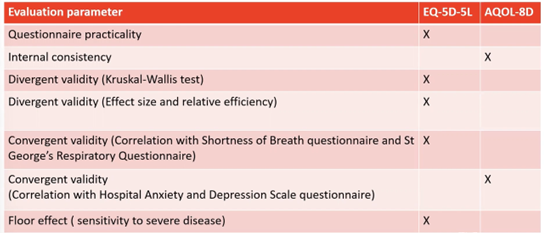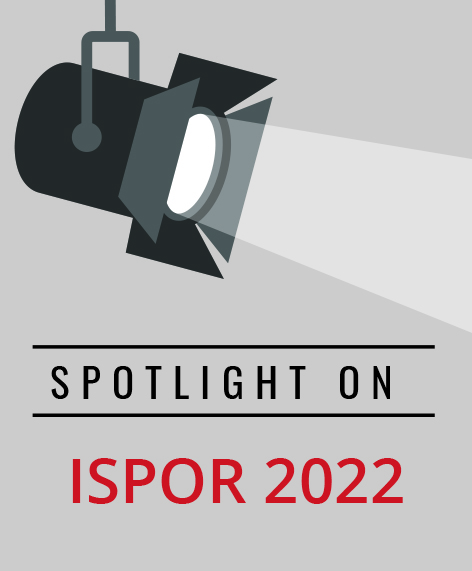Analytic Studies in Patient-Centered Research
Ingrid Cox, MD, MSc, Menzies Institute for Medical Research, University of Tasmania, Hobart, Tasmania, Australia
This session featured 4 researchers presenting on varying aspects of patient reported outcomes and was moderated by Elisabeth Oehrlein, PhD, MS (Applied Patient Experience, LLC, USA) (Figure).
Figure. Presenters and moderator from the session

Clockwise: Debra Wujcik, Neha Agrawal, Elizabeth Oehrlein, and Marina Soley-Bori
The first presenter, Debra Wujcik, PhD, RN (Carevive Systems, Inc, USA) presented a study that explored symptom patterns and predictors leading to an automated alert of severe symptoms (worsening) and symptom resolution after the alert (improvement) in patients using remote symptom management technology. This study also sought to interpret the symptom patterns and explore associations between these symptom patterns and sociodemographic and clinical characteristics. Patients undergoing treatment for cancer were included and completed weekly surveys. Most patients had cancers of the breast, lung, ovaries, multiple myeloma, or acute myeloid leukemia. Main symptoms generating alerts were pain (.60), insomnia (.40), constipation (.37), decreased appetite (.36), fatigue (.34), nausea (.31), neuropathy (.27), and diarrhea (.22). Four main clusters were identified: durable improvement, unresolved, cyclic pattern, and slow resolution. Regression analyses showed that age was a significant positive predictor of “worsening” and modified geriatric assessment was a significant predictor of “improvement” with more frail and non-white patients showing sharper “improvement.” Wujcik concluded that this study was important as it can be used to identify at-risk patients who will benefit from interventions with less severe reports of symptoms and those who improve more quickly.
Marina Soley-Bori, PhD, MA (King’s College London, UK), presented results of an external validation of the most recent PedsQL to CHU9D mappings and an improved algorithm for mapping from the PedsQL to CHU9D based on a sample with a wide age range (0 to 16 years of age) and chronic conditions (asthma, eczema, or constipation). Data from the Children and Young People’s Health Partnership (CYPHP) Evelina London Model of Care randomized controlled trial was used to validate the algorithms. Results of the validation demonstrated that existing mappings show an acceptable performance in the CYPHP sample and that new CYPHP mappings perform better for the study sample compared to previous versions. Despite this, Soley-Bori emphasized that internal validation and better mappings to assess individuals with multimorbid conditions were needed, which is currently being explored.
Neha Agrawal, MA (CHEORS, USA) presented a comparison of health-related quality of life (HRQoL) of patients with osteoarthritis and other types of musculoskeletal diseases using the SF-12. The study demonstrated that mean Physical Component Summary (PCS) were lower in patients with osteoarthritis compared to other musculoskeletal diseases, but the Mental Component Summary (MCS) were comparable. Being a Hispanic male between 50-64 years old working a blue-collar job was associated with lower MCS scores and white-collar jobs were associated with lower PCS scores. Agrawal concluded that more research was needed to demonstrate the treatment impact on HRQoL to alleviate the burden associated with osteoarthritis.
Ingrid Cox, MD, MSc (University of Tasmania, Australia) discussed the results of a head-to-head comparison of the EQ-5D-5L and the AQOL-8D preference-based instruments in deriving health state utility values (HSUVs) for a cohort of patients with idiopathic pulmonary fibrosis. The instruments were compared on 3 criteria: (1) questionnaire practicality, (2) agreement between the 2 instruments, and (3) test performance (internal and construct validity) (Table). The study concluded that the EQ-5D-5L was more suitable for measuring HSUVs when compared to the AQOL-8D, as it demonstrated a better response rate, was better able to distinguish between clinical groups or patient characteristics, was more correlated with the respiratory questionnaires, and was more sensitive to measuring severe disease. Cox concluded that while the results favored the EQ-5D-5L, a full validation of the instrument was necessary in the idiopathic pulmonary fibrosis population.
Table. Comparison of the EQ-5D-5L and AWOL-8D preference-based instruments.

Full details on the session can be found at: https://ispor2022.onlineeventpro.freeman.com/sessions/23883039/Analytic-Studies-in-Patient-Centered-Research

